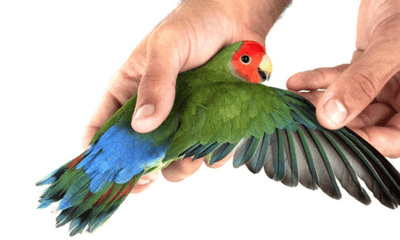Fleas are small, jumpy and multiply very quickly. These pesky little pests can quickly become a nightmare for pet owners when they are not managed properly. They are not only a nuisance, but can also cause major health problems for both humans and pets. Fleas bites can be itchy and uncomfortable, and can also transmit diseases such as tapeworm, therefore, it is important to take preventative measures to avoid flea infestations in your home.
Where do the fleas come from?
Pets can pick up fleas from being outside in nature and around other animals. Fleas can live in carpets, bedding and other surfaces in the home. They like to hide in places where they can stay warm, and are undisturbed. If your pet has fleas, it is highly likely that your house and backyard will become a breeding ground. It is important to remember that just because you can’t see the fleas, doesn’t mean that they aren’t alive and thriving. Whilst it requires a lot of patience and persistence, you can eradicate a flea infestation with a combination of cleaning methods, sprays and topical or oral medications.
The flea life cycle
Fleas take four forms during their life cycle - egg, larvae, pupae and adult fleas. This cycle can take anywhere from 2 weeks to 8 months depending on the temperature, humidity, food and the type of flea species. A single adult female flea can produce up to 2000 eggs in her lifetime, and these eggs may be laid in your pet’s fur, deep in the carpet or in tall grass. Fleas are ready to feed within a day of hatching, and can begin sucking blood within seconds of landing on a host. If the conditions are not ideal, flea larvae may remain dormant for months, which is one of the many reasons that eradicating a flea infestation can be so difficult. Since the flea has multiple life stages, when adult fleas are present, it is assumed that all of the stages are also present within the environment.
How do I deal with a flea infestation?
Successful flea prevention starts by getting rid of the fleas that are already present and then preventing them from coming back. Cleaning and the use of flea medications may get rid of the majority of fleas within a few days, however, it can take weeks or months for all the fleas in the environment to die. If you have a large property or multiple pets with fleas, it may take even longer.
Parasite prevention
All pet owners are recommended to use a year round parasite prevention to rapidly kill fleas and stop the flea reproductive cycle. You may choose to use an oral treatment such as Bravecto or Nexgard, both of which rapidly kill fleas. Alternatively, you could opt for a spot-on treatment such as Advocate, which kills fleas as soon as they come into contact, rather than waiting for the parasite to bite. Ask your local veterinarian for advice on which parasite prevention treatment is best for your pet.
Pet bedding
It is important to regularly change and wash all bedding. Pet bedding should be washed in hot water and detergent, and if the flea infestation is severe you should consider acquiring new bedding. In addition to the pet bedding, wash any other quilts, blankets, towels, linens or any material that fleas could inhabit at least every few weeks. Always dry the bedding on the highest heat and use cleaning chemicals that are pet-friendly.
Thorough cleaning
You should thoroughly clean any areas where fleas may breed such as floors, carpets and rugs. Sweep and vacuum well and often, and always dispose of the vacuum bag when you are finished. Use a powerful vacuum for the floors, and steam clean the carpets.
Yard and garden maintenance
Pet owners should keep their garden and yard clean to reduce the presence of flea larvae. You should mow your lawn regularly, as fleas like to hide in tall grass. When cleaning your yard, make sure you cover all areas that are shady, humid and warm, as this is most likely where they will hide. If the problem is bad, your vet may recommend using an insecticide such as Malaban to help eradicate the problem.
Flea sprays
Flea sprays can help you get rid of a flea infestation by killing fleas on contact. Frontline Spray kills about 98% of fleas within 24 hours, and one application kills fleas for up to 12 weeks. Make sure you follow instructions and use a pet-friendly spray that is not toxic to animals.
Flea Shampoo
There are a range of flea shampoos available that may help control fleas. Fidos Flea Shampoo is a soap-free shampoo that contains natural pyrethrin for flea and lice control. Always make sure to use a shampoo that is suitable for your pet’s size, coat type and skin sensitivity. While flea shampoos may kill the fleas that are on your pet, they will not knock out the infestation in the environment.
If your pets have irritated skin or are scratching or biting their fur more than usual, there is a good chance they have fleas. If you suspect your pet has fleas, act quickly to prevent the problem from getting worse. When you have the infestation under control, be sure to maintain a regular flea prevention regimen so you can have peace of mind all year round. Remember, it is much easier to keep fleas out of your home than it is to get rid of them!






